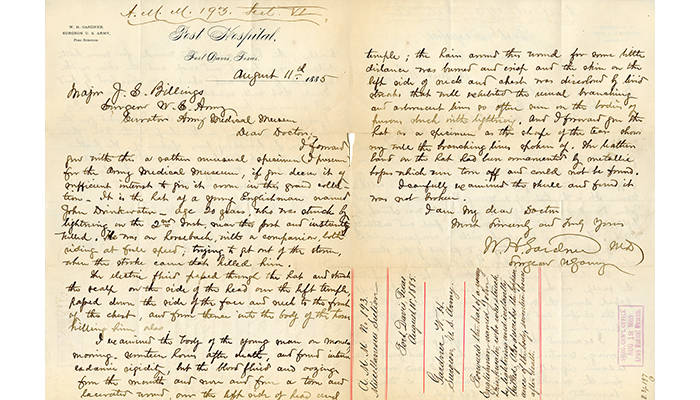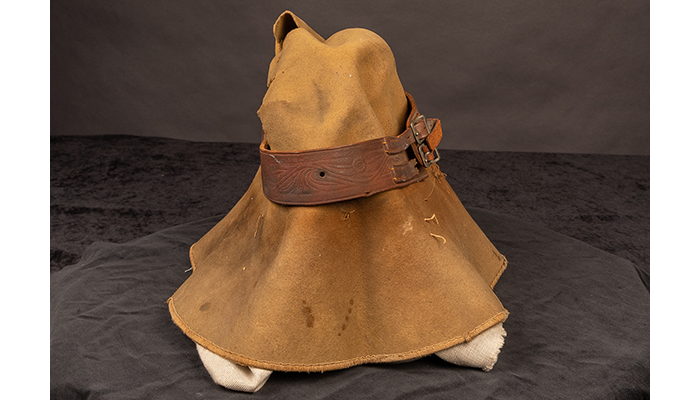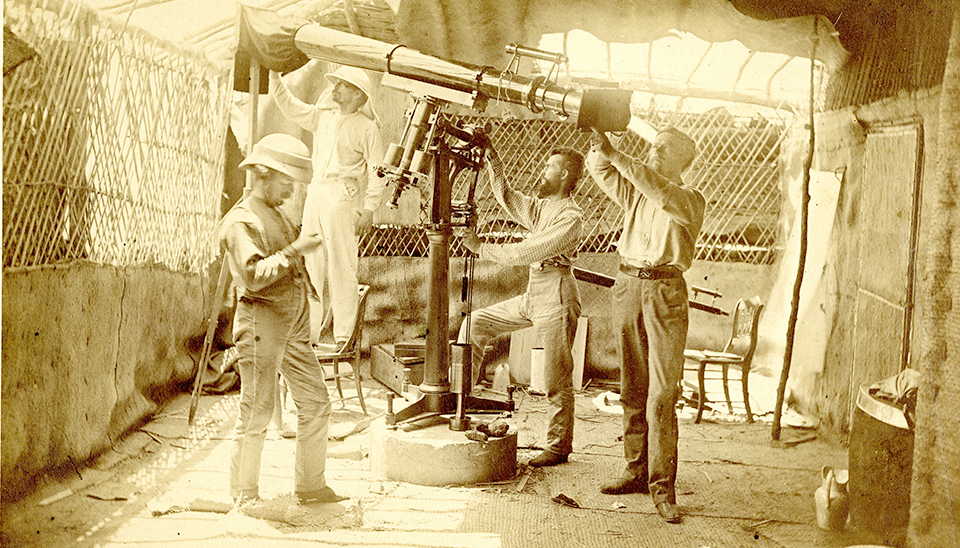Built in 1876 and active until 1891, the post hospital at Fort Davis in the post-Civil War Texas frontier was one of the most modern hospitals in the West. The post surgeons and assistant surgeons were highly trained physicians, commissioned officers, and nearly all were veterans of the Civil War. The responsibilities of a post surgeon were extensive and varied, and spanned from the oversight of general daily sanitation and food production to the medical care of the post's residents and the local population.
U.S. Army surgeon William Henry Gardner served as post surgeon at Fort Davis from 1882 to 1886. During his tenure, Gardner oversaw the construction of a new wing of the hospital in addition to a multitude of other daily tasks. One expectation of post surgeons and assistant surgeons was the active collecting of specimens to be forwarded to the Army Medical Museum (now NMHM) when it was still in the early years of building its collections. Although in the heart of the Texas frontier during the Indian Wars, Army records for the post indicate that the greatest burden of the hospital's cases were accidental injuries and treatment of disease, rather than battle-related injuries.

Letter by post surgeon William Henry Gardner to the museum detailing the case of John Drinkwater and his lightning-struck hat. (AFIP 379021)
One such civilian accident occurred on Aug. 2, 1885, while the hospital was under the care of Surgeon Gardner. A young Englishman named John Drinkwater was furiously riding his horse in a desperate attempt to escape a Texas summer storm when he and his horse were struck by lightning and immediately killed, as witnessed by a riding companion who remained unharmed. In a letter to the museum accompanying a damaged hat, Gardner recounts in lurid detail the violence of the strike that killed the man and the resulting condition of the body upon his own personal examination. He writes of a "rather unusual specimen" that he believed fellow Army physician and museum curator John Shaw Billings would be interested in adding to the collection. Presumably through the second-hand account of the companion riding with Drinkwater, he describes the action of the strike, "The electric fluid passed through the hat and struck the scalp on the side of the head over the left temple, passed down the side of the face and neck to the front of his chest, and from thence into the body of the horse killing him also." He examined the body 17 hours after the accident and noted lacerations and burns where the lightning traveled through the body. He also described a pattern of "the usual branching and arborescent lines so often seen on bodies of persons struck with lightning." It is a phenomenon known as Lichtenberg figures: lesions created when capillaries beneath the skin rupture due to electrical shock. This creates a tree-like pattern that disappears within a few days.

Gardner submitted the "rather unusual" hat to the museum as he believed it exhibited a similar branching pattern to the design he witnessed on the body. The metallic ornaments on the hat's leather band were blown off during the strike and were never found.
Gardner left Fort Davis at the end of 1886 and served as a lieutenant colonel and U.S. Army Deputy Surgeon General until 1896; he retired in 1898. Gardner is buried in Arlington National Cemetery and his hat currently resides at NMHM in the Historical Collections among other artifacts with supporting case study materials that offer insight into the history of military medicine.
Resources
OHA 75 Contributed Photographs Collection CP 3120
OHA 31 Museum Records: Accession Records AFIP 379021 (letter)
"The Post Hospital at Fort Davis, 1876-1891." National Park Service.
"Lightning Injuries." DynaMed. EBSCO Information Services. Accessed January 23, 2023.
Relevant Links:






